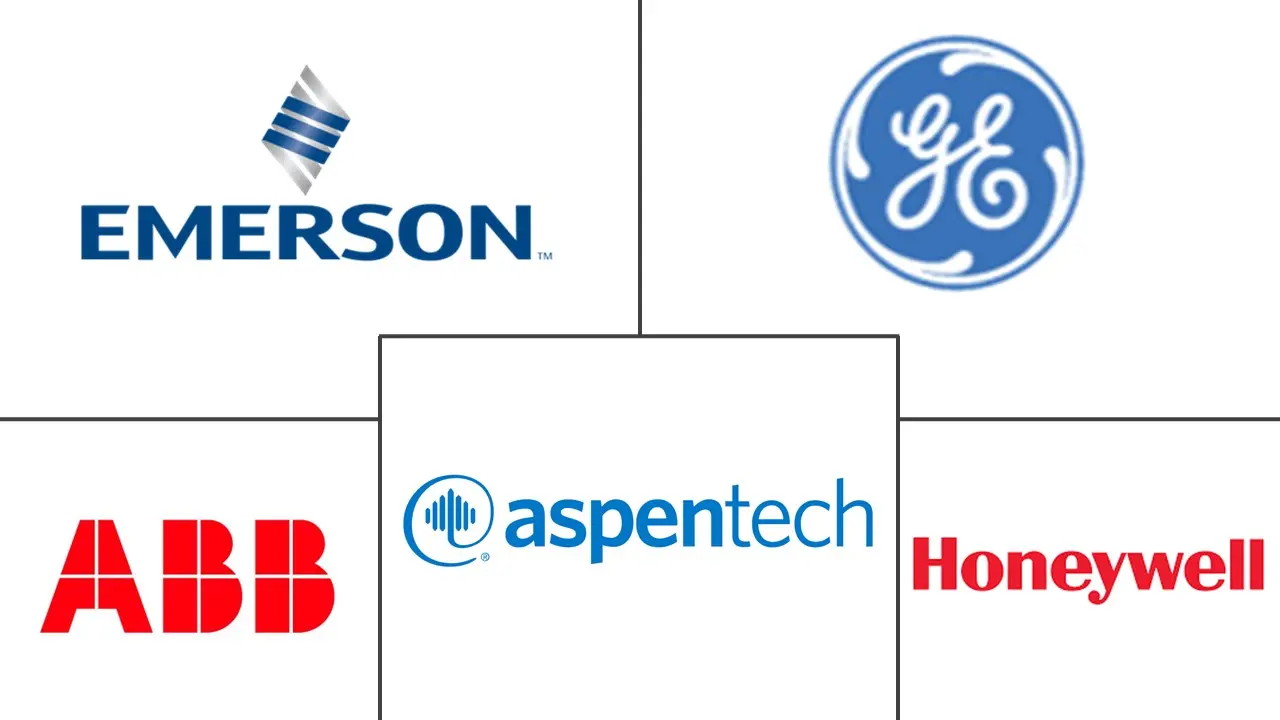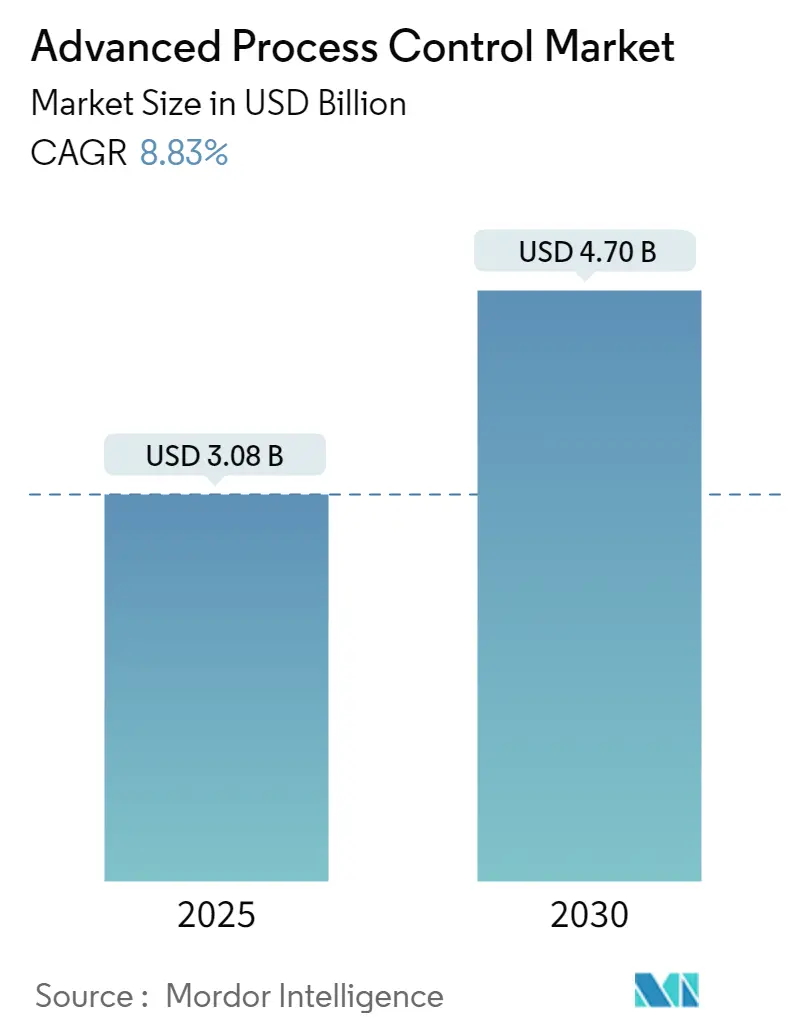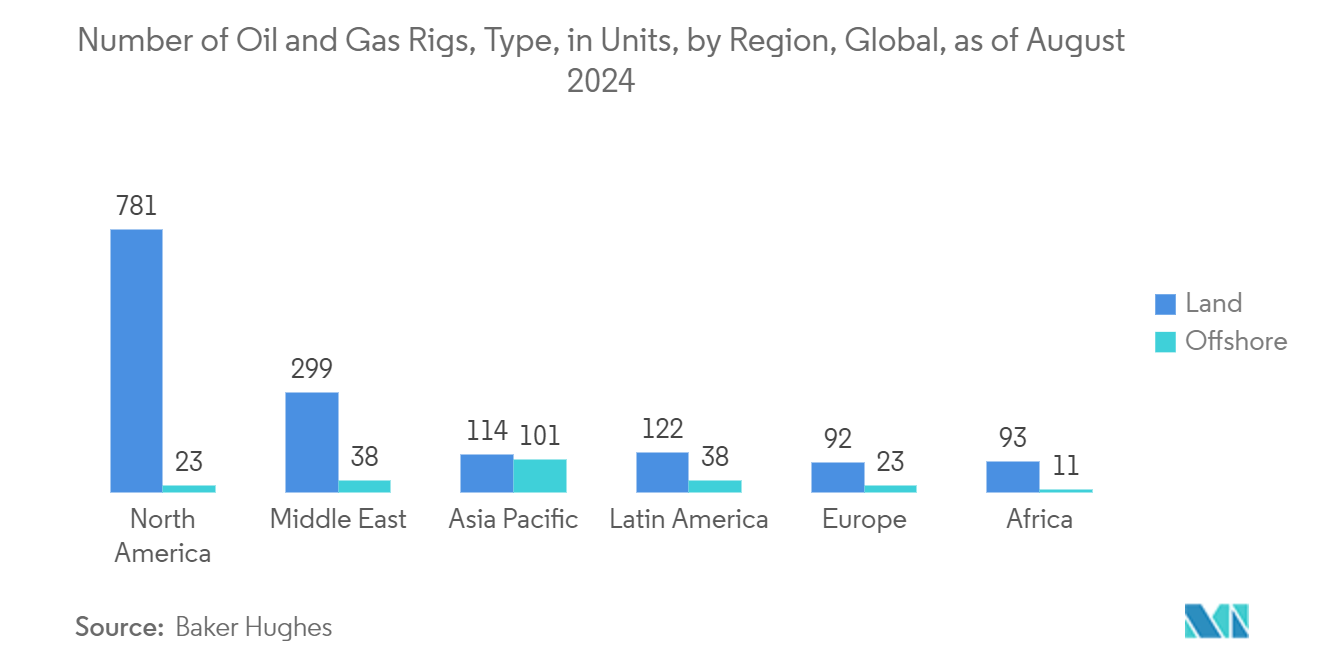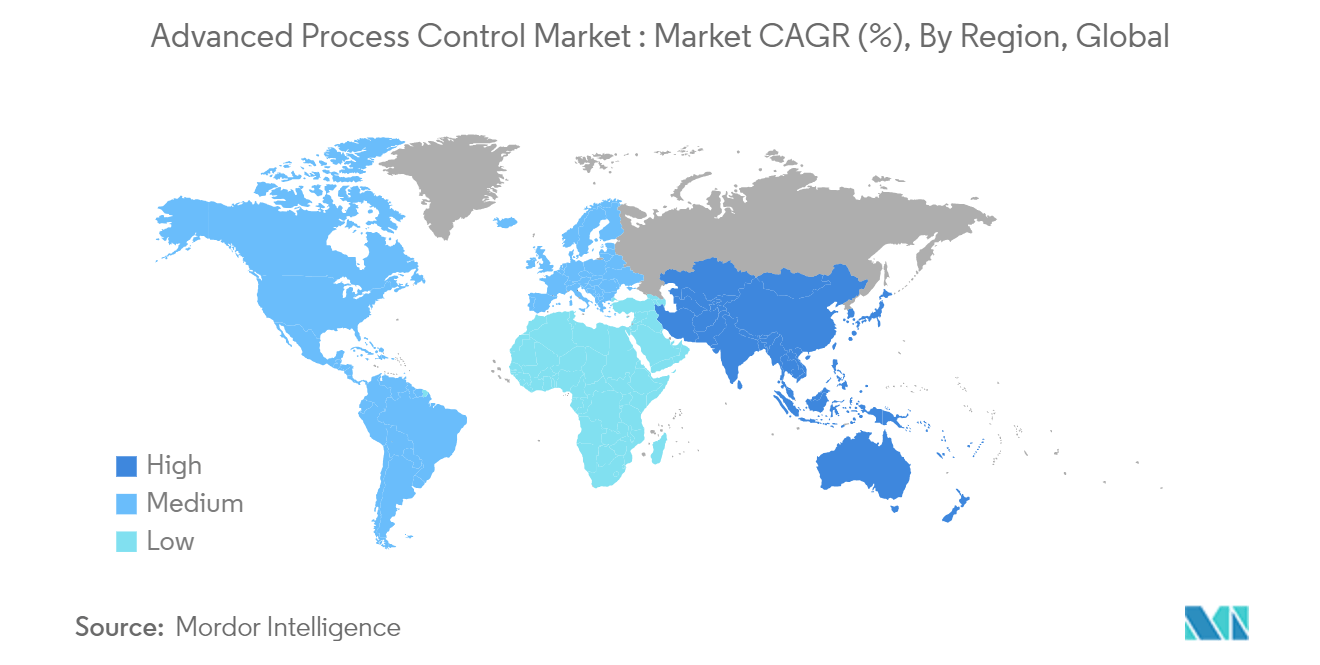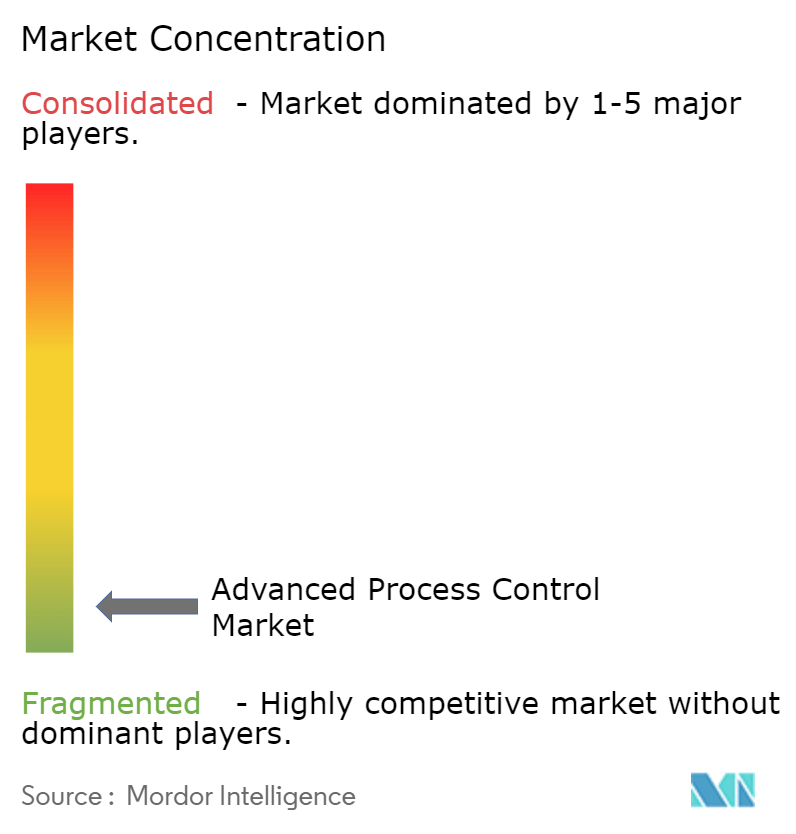Advanced Process Control Market Analysis
The Advanced Process Control Market size is estimated at USD 3.08 billion in 2025, and is expected to reach USD 4.70 billion by 2030, at a CAGR of 8.83% during the forecast period (2025-2030).
Advanced process control (APC) refers to a set of sophisticated techniques and technologies used in industrial process control systems to enhance the performance and efficiency of manufacturing processes. APCs are supplementary to basic process controls and are introduced to target specific performance or economic enhancements. Despite being established over 30 years ago, APC has surged in prominence recently, with global factories prioritizing process optimization. These solutions seamlessly merge information, control, power, and safety measures, addressing the rising demand for cost-effective energy, adhering to strict government regulations, and reducing expenses.
- APC encompasses a sophisticated interplay of hardware and software, working in unison to optimize control loops. The primary objective of APC is to enhance the performance of processes integral to production. By maintaining consistent control, APC not only streamlines the production process but also renders the output results more predictable.
- Industries are increasingly turning to automation solutions to boost productivity and enhance operational efficiency. APC systems leverage sophisticated algorithms and predictive modeling to streamline processes, minimize downtime, and elevate overall performance. As businesses aim to amplify output while curtailing costs, the integration of APC technologies becomes indispensable. This trend is driven by the relentless pursuit of operational excellence and the need to stay competitive in a rapidly evolving market landscape.
- As industries face heightened scrutiny regarding safety standards, APC systems are being adopted to improve operational safety. These systems can automate safety protocols, monitor processes in real-time, and quickly identify anomalies that could lead to hazardous situations. By minimizing human error and enhancing response time, APC systems help prevent accidents and ensure compliance with safety regulations.
- Integrating APC systems with existing infrastructure and legacy systems presents significant challenges. Many industries continue to operate with outdated technology, which complicates the seamless incorporation of advanced control solutions. This complexity can lead to increased costs and extended deployment timelines, thereby deterring potential adopters from investing in these technologies.
- As legacy control systems age, industrial players are increasingly focusing on upgrading and modernizing them to stay competitive. Modernization typically involves integrating more advanced control algorithms, enhancing digital capabilities, and improving overall system robustness.
- For instance, in August 2024, ABB implemented its advanced process control solution, the ABB Ability Expert Optimizer system, at the Tokuyama Nanyo cement plant in Japan. With the commissioning of the ABB Ability Expert Optimizer, Tokuyama can now achieve a reduction of approximately 3% in thermal energy consumption in the kiln, all while upholding the operational quality at the Nanyo plant, recognized as one of Japan's largest single factories. This industrial software harnesses advanced process control techniques, including linear and non-linear model predictive control, fuzzy logic, and neural networks, to consistently and accurately automate optimal operational decisions.
Advanced Process Control Market Trends
Oil and Gas Industry to be the Largest End User
- In the oil and gas sector, production optimization is essential for enhancing output while minimizing costs. APC systems utilize real-time data analytics and predictive modeling to manage production processes more effectively. For instance, in reservoir management, APC can monitor and control parameters such as pressure, temperature, and flow rates. These systems can predict future production trends by analyzing historical data and current conditions and adjust operations accordingly to maximize yield.
- In fields employing Enhanced Oil Recovery (EOR) methods, APC can play a vital role by optimizing injection strategies and monitoring the effectiveness of various recovery techniques. Operators can significantly improve recovery rates and enhance overall production efficiency by dynamically adjusting the parameters based on real-time feedback.
- Data from the Energy Institute highlights the United States as the global leader in crude oil production. In 2023, the United States achieved a daily output of 19.4 million barrels, marking a significant increase from 2010, primarily driven by advancements in unconventional tight oil extraction. Following the United States, Saudi Arabia and Russia secured the second and third positions, producing approximately 11.4 and 11.1 million barrels daily, respectively. It is important to note that oil production encompasses various forms, including crude oil, shale oil, oil sands, and natural gas liquids. The upsurge in oil production is likely to aid the demand for the studied market.
- According to the Energy Institute, in 2023, the majority of oil worldwide was produced in the Middle East, which accounted for around 31.5% of the global output that year. Countries such as United Arab Emirates, Kuwait, Bahrain, and Saudi Arabia are continuously focusing on increasing oil and gas production.
- The United Arab Emirates has made significant investments in bolstering its hydrocarbon production capacity and enhancing its midstream and downstream infrastructure. Furthermore, the country is actively diversifying its production locations. As of early 2023, the UAE's proven crude oil reserves were estimated at a substantial 111 billion barrels, marking an increase from the previouyear's’s 107 billion barrels. The global increase in oil production is anticipated to significantly drive the demand for the studied market.
- APC systems can assist in real-time decision-making during drilling operations. For example, if unexpected geological conditions are detected, the system can automatically adjust drilling parameters or alert operators to take corrective actions. This capability not only enhances efficiency but also reduces the risk of costly drilling incidents and equipment failures.
- According to Baker Hughes, most of the world's's oil rigs are located on land. At the end of 2023, there were 1,337 operational onshore oil rigs and 240 offshore rigs. In 2021, there were 1,309 operational onshore oil rigs. North America leads the world in hosting oil and gas rigs. As of August 2024, the region boasted 781 land rigs and an additional 23 offshore. The robust oil rigs worldwide are likely to offer significant growth to the studied market.
North America is Expected to Hold Significant Market Share
- The North American region is anticipated to hold a significant share of advanced process control with the region's growing new smart factory announcements. Also, the establishment of new power plants, the presence of leading semiconductor manufacturing industries, and the demand for industrial automation are anticipated to augment the market for North American APC systems.
- The United States is the major contributor to the market in the region. As the country is in the middle of an energy transformation, it is witnessing the adoption of advanced technologies across various end-user industries. Technological advancements in hydraulics and drilling fracturing (fracking) of shale formations have driven the growth in oil and gas production.
- The US manufacturing industry has been among the early adopters of these solutions, given the stiff competition from the Chinese manufacturing industry; owing to such factors, the adoption is mature for large-scale adoption, and technology upgrade needs majorly drive demand.
- The growing cybersecurity threats targeting the manufacturing industry present a significant challenge. These challenges, spanning from intellectual property theft, supply chain attacks, and nation-state attacks to equipment sabotage and internal breaches, require an in-depth and multi-layered security approach. It is clear that traditional defenses are insufficient, and a proactive, intelligence-driven strategy is needed to identify and mitigate threats before they escalate.
- The adoption of Industry 4.0 in the global market further emphasized the need for advanced process control systems. The Fourth Industrial Revolution was the focus of last year's World Economic Forum meeting in Davos, and its scope and impact are anticipated to be transformational. This industrial revolution is anticipated to disrupt every industry from various developed countries, changing entire systems of production, management, and governance, including the United States.
- In April 2024, the US Department of the Interior (DOI) granted permits to over 25 GW of renewable energy capacity on public lands, a milestone earmarked initially by the Biden administration for 2025. The DOI approved over 29GW of solar, wind, and geothermal generation capacity on public lands. The Bureau of Land Management (BLM), a body within the DOI, said it is currently processing permits for 66 utility-scale clean energy projects.
- As the generation capacity of renewable energy sources like solar, wind, and hydropower expands, there is a growing need for systems that can optimize their output. APC systems can enhance the efficiency of energy production by continuously adjusting operational parameters to respond to changing environmental conditions, such as fluctuations in sunlight or wind speed. This optimization is crucial for maximizing energy yield and ensuring grid stability.
Advanced Process Control Industry Overview
The degree of competition depends on various factors affecting the market, such as brand identity, powerful competitive strategy, and degree of transparency. One of the major factors governing this force is market innovation. Companies in the market have a significant advantage over competitors due to technological innovations, with new products offering performance gaining faster adoption. Companies in the market are investing heavily to gain a competitive edge.
The APC market comprises several global and regional players who are vying for attention in a fairly contested market space. These players' presence and constant innovative activities intensify the competition in the market. The intensity of competitive rivalry in the market is very high, owing to the presence of large-scale companies such as ABB Ltd, Emerson Electric Co., Yokogawa Electric, Honeywell International Inc., and Schneider Electric SE.
These companies are struggling to gain a competitive advantage by constantly trying to develop their product portfolio and develop expertise. The level of market penetration is relatively high, with tight control on distribution. For instance, while ABB leads the market in electric power generation, it also has a significant presence in oil and gas. Honeywell also has a large installed base of process automation systems.
The firm concentration ratio has remained moderate in the market studied, and it is expected to grow steadily during the forecast period. Overall, the intensity of competitive rivalry is relatively high.
Advanced Process Control Market Leaders
-
ABB Ltd.
-
Aspen Technology Inc.
-
Emerson Electric Co.
-
General Electric Co.
-
Honeywell International Inc.
- *Disclaimer: Major Players sorted in no particular order
Advanced Process Control Market News
- July 2024: Hollysys Automation Technologies Ltd and Ascendent Capital Partners ("Ascendent") announced the successful completion of their merger. This merger, involving Hollysys and entities affiliated with Ascendent, was executed by the agreement and merger plan dated December 11, 2023. The agreement was made between the company, Superior Technologies Holding Limited, and its wholly-owned subsidiary, Superior Technologies Merger Sub Limited.
- May 2024: ABB Ltd won an order from Södra Cell to implement optimization control for the pulp and paper manufacturer's mill in Värö, Sweden. The project builds on the strategic partnership between ABB and SödraCell, with the ambition to develop new levels of efficiency, engagement and digitalization for the producer's operations. Södra Cell currently owns some of the world's most modern and high-tech pulp mills, and the ambition is to operate the mills even more efficiently and sustainably.
Advanced Process Control Industry Segmentation
APC operates at the supervisory level, optimizing process units in real time. Utilizing mathematical models, algorithms, or statistical analyses—typically executed on a computer network and monitored from the control room—this program predicts and manages process behavior. APC applications enhance plant operations by overseeing lower-level regulatory controllers, ensuring safety, and making minimal adjustments to the existing regulatory control system. By harnessing insights from decision-making models like artificial intelligence, machine learning, and digital twins, the APC application steers the plant in a safe, dynamic, and responsive manner.
The advanced process control market is segmented by type (advanced regulatory control, model predictive control, and other types), end-user industry (oil and gas, chemicals and petrochemicals, pharmaceutical, food and beverage, energy and power, cement industry, metal processing, pulp and paper, and other end-user industries), and geography (North America, Europe, Asia-Pacific, Latin America, and Middle East and Africa). The market sizes and forecasts are provided in terms of value (USD) for all the above segments.
| By Type | Advanced Regulatory Control |
| Model Predictive Control | |
| Other Types | |
| By End-user Industry | Oil and Gas |
| Chemicals and Petrochemicals | |
| Pharmaceutical | |
| Food and Beverage | |
| Energy and Power | |
| Cement Industry | |
| Metal Processing | |
| Pulp and Paper | |
| Other End-user Industries | |
| By Geography*** | North America |
| Europe | |
| Asia | |
| Australia and New Zealand | |
| Latin America | |
| Middle East and Africa |
Advanced Process Control (APC) Market Research FAQs
How big is the Advanced Process Control Market?
The Advanced Process Control Market size is expected to reach USD 3.08 billion in 2025 and grow at a CAGR of 8.83% to reach USD 4.70 billion by 2030.
What is the current Advanced Process Control Market size?
In 2025, the Advanced Process Control Market size is expected to reach USD 3.08 billion.
Who are the key players in Advanced Process Control Market?
ABB Ltd., Aspen Technology Inc., Emerson Electric Co., General Electric Co. and Honeywell International Inc. are the major companies operating in the Advanced Process Control Market.
Which is the fastest growing region in Advanced Process Control Market?
Asia Pacific is estimated to grow at the highest CAGR over the forecast period (2025-2030).
Which region has the biggest share in Advanced Process Control Market?
In 2025, the North America accounts for the largest market share in Advanced Process Control Market.
What years does this Advanced Process Control Market cover, and what was the market size in 2024?
In 2024, the Advanced Process Control Market size was estimated at USD 2.81 billion. The report covers the Advanced Process Control Market historical market size for years: 2019, 2020, 2021, 2022, 2023 and 2024. The report also forecasts the Advanced Process Control Market size for years: 2025, 2026, 2027, 2028, 2029 and 2030.
Our Best Selling Reports
Advanced Process Control Industry Report
Statistics for the 2025 Advanced Process Control market share, size and revenue growth rate, created by Mordor Intelligence™ Industry Reports. Advanced Process Control analysis includes a market forecast outlook for 2025 to 2030 and historical overview. Get a sample of this industry analysis as a free report PDF download.

